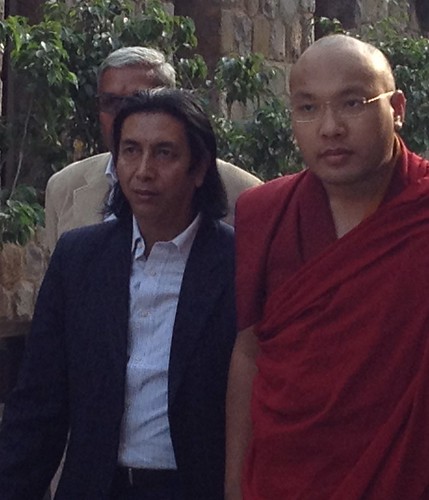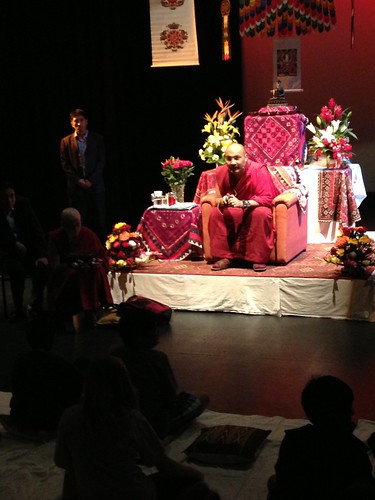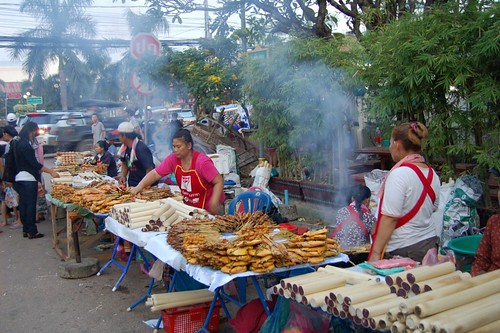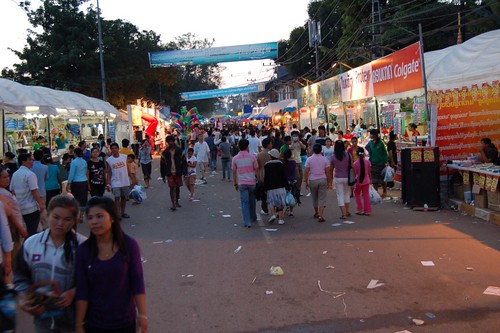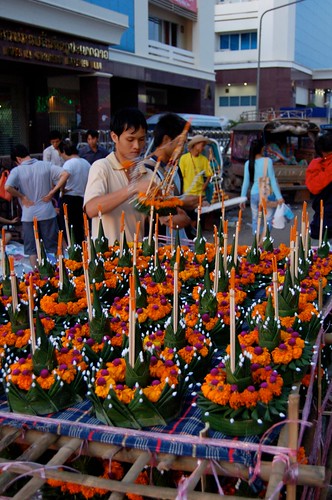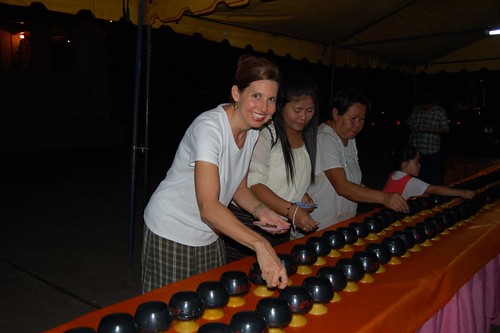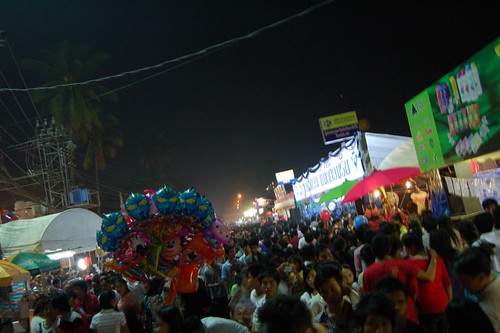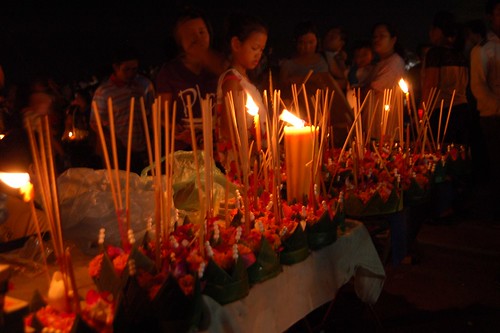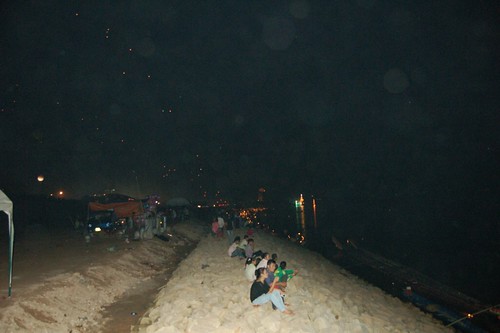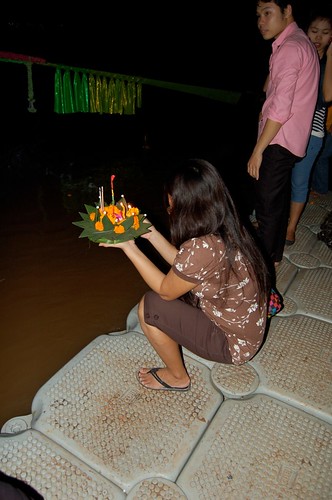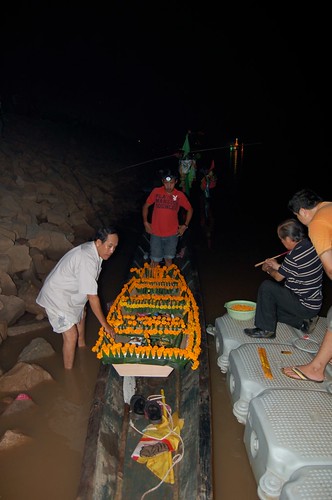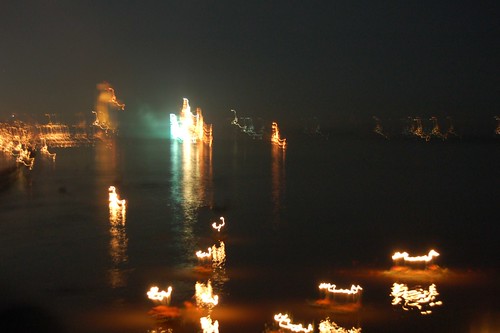When it comes to Buddhist temples, I have definitely seen my fair share. (Check out my Wat’O’The Week series from when we lived in Laos.) However, I never participated in a temple ceremony … until now.
I was chatting with our school’s athletic director, Matt, earlier this week about being a vegetarian in Thailand. He mentioned that his wife, Oon, ate vegetarian once a week to honor Buddhist teachings. I texted her to say, “Hey, I would love to join you for vegetarian food some time!” and she immediately wrote back, saying, “Today is Buddhist day! We can go find vegetarian food for dinner if you’re interested.”
That evening, Oon picked me up in her golf cart and took me to V-Kitchen, a vegan Thai restaurant in our ‘hood. The food was delicious, albeit a tad spicy. (And since it was Buddhist day, I didn’t want to order a beer to cut the fire. ) Each dish was bursting with Thai flavors and tasted like their traditional meaty counterparts. I will definitely return!
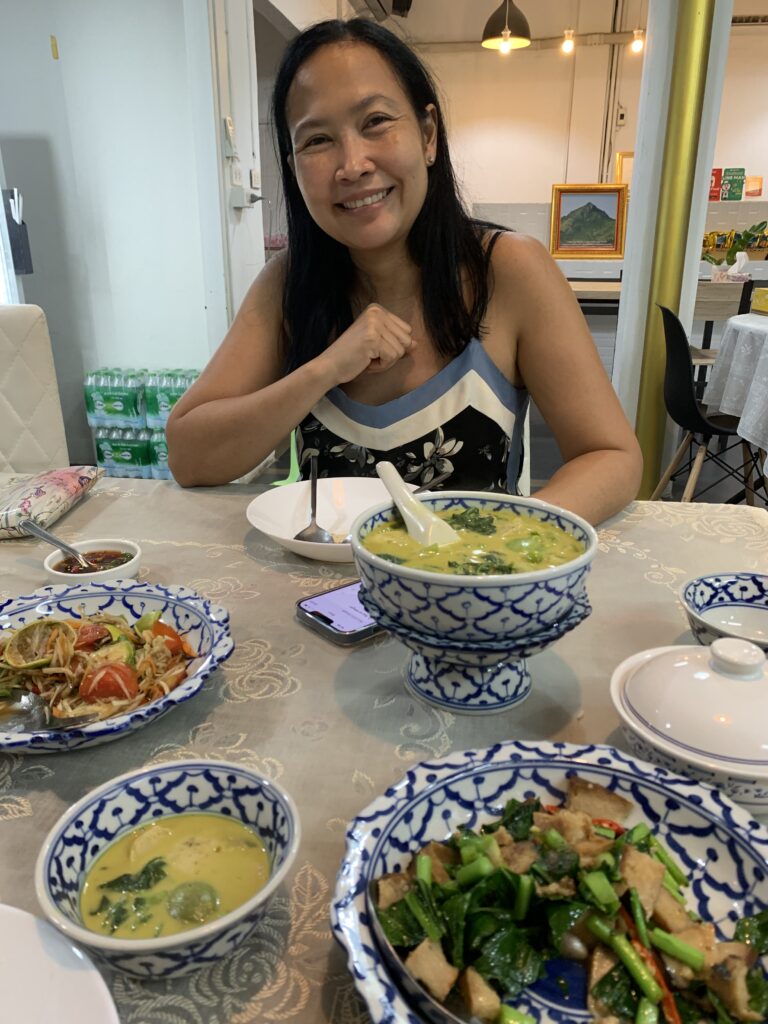
During dinner, Oon mentioned that she was hoping to visit the temple because it was a Buddhist holiday. Always keen for a cultural event, I jumped at the chance to join her.
First, we drove to Oon’s house to switch vehicles and outfits. She put on a white top, and we both donned long embroidered wrap-skirts, called sinh. I actually own a gorgeous sinh from Laos, but we didn’t have time to swing by my house. I loved the bright yellow color of the sinh Oon lent me.
Golf carts can’t venture too far from our neighborhood, so we jumped in Oon’s car and headed for Viriyadhammo Meditation Center, about 30 minutes away. A full moon peeked out from the cloudy sky, and bright lights illuminated the rural temple. I couldn’t see much beyond the car headlights, but Oon said the temple was surrounded by rice paddies.
Asahna Bucha Day, a national holiday, occurs on the first full moon of the eighth lunar month. This year, it fell on Tuesday. It commemorates the day that Buddha delivered his first formal sermon after his enlightenment.
According to the Fan Club Thailand website, Thais celebrate Asahna Bucha Day with a visit to the temple.
In Buddhism, white represents purity and many devotees will wear a white top when visiting the temple on the main Buddhist holidays. Temples across the country are busier than usual on these dates with Thai people giving alms to monks and performing the wian tian ceremony. This involves a person holding a lighted candle (tian), incense and flowers as they walk clockwise in a circle (wian) three times around the main bot of the temple.
Sure enough, that’s what we did.
We kicked off our shoes and climbed the steps, which were flanked by a huge silver Phaya Naga, the mythical half-human half-snake that guards the temple. At the top, people were kneeling on mats and chanting. Someone handed Oon a couple of mats for us, so we found a spot to sit. Oon took a book of chants, found the correct page, and joined the chanting, while I just soaked in the peaceful vibe.
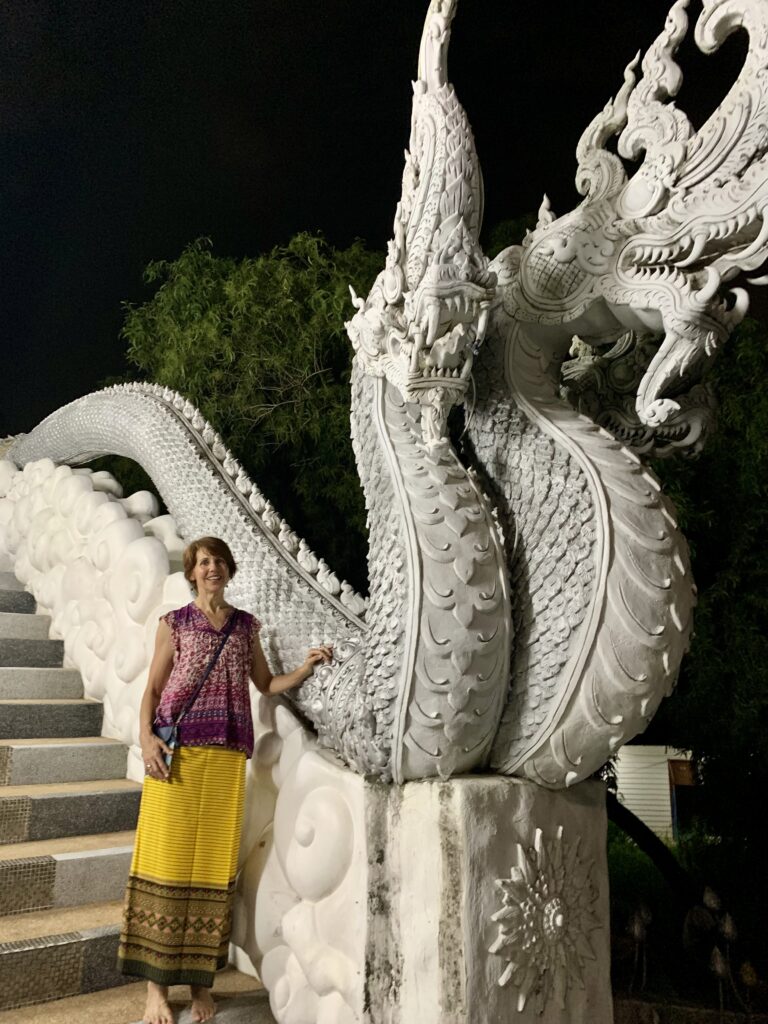
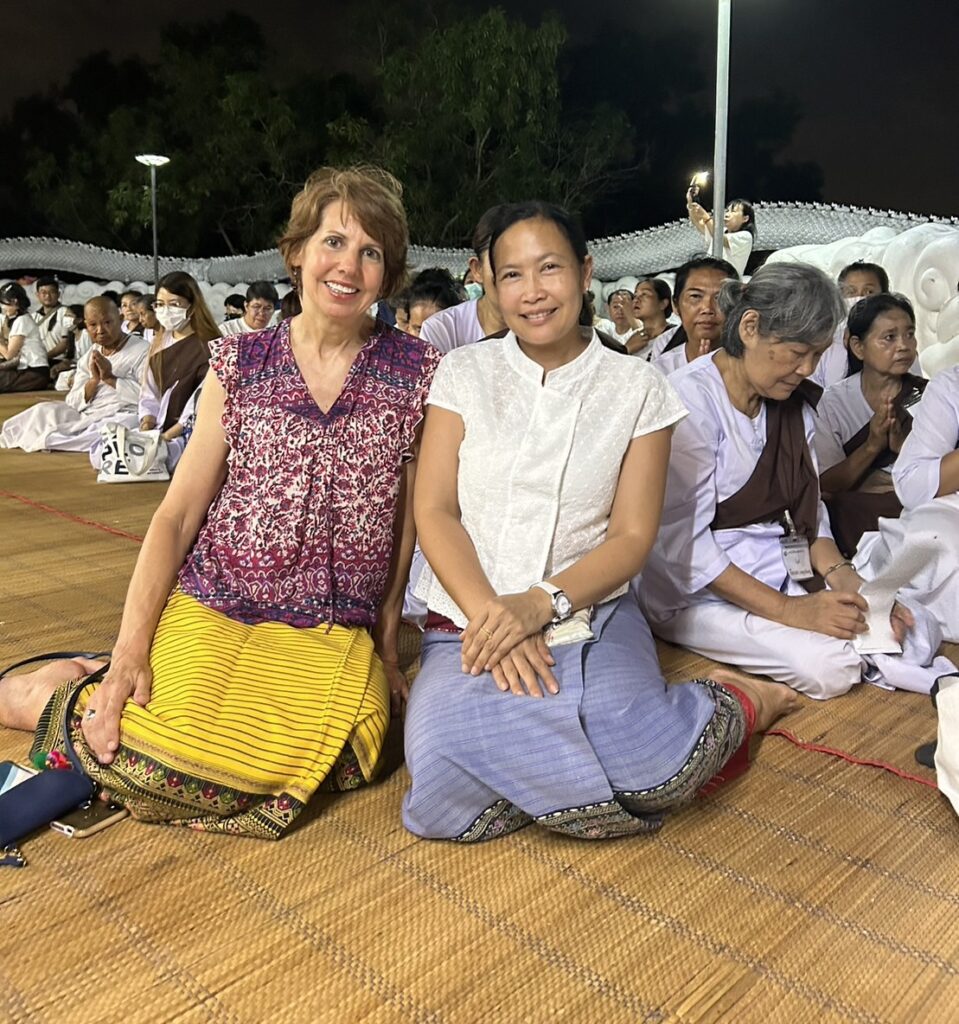
Oon explained that the people dressed in white with dark sashes were staying at the temple to study and meditate. The women with shaved heads were nuns. She said women can become a nun temporarily, something she hopes to do someday for a month or so.
At the base of the temple, a waterfall flowed over two nagas, while a monkey figure appeared to climb the wall. I asked Oon why there was a monkey, and she said when Buddha would teach, even the animals gathered to listen. A huge golden Buddha topped the temple, and Oon noted it was the “Saturday Buddha,” and she was born on Saturday, so it was particularly special. I previously wrote about the Buddha’s days-of-the-week poses here, so I knew that Saturday Buddha is sitting in meditation with the naga protecting him.
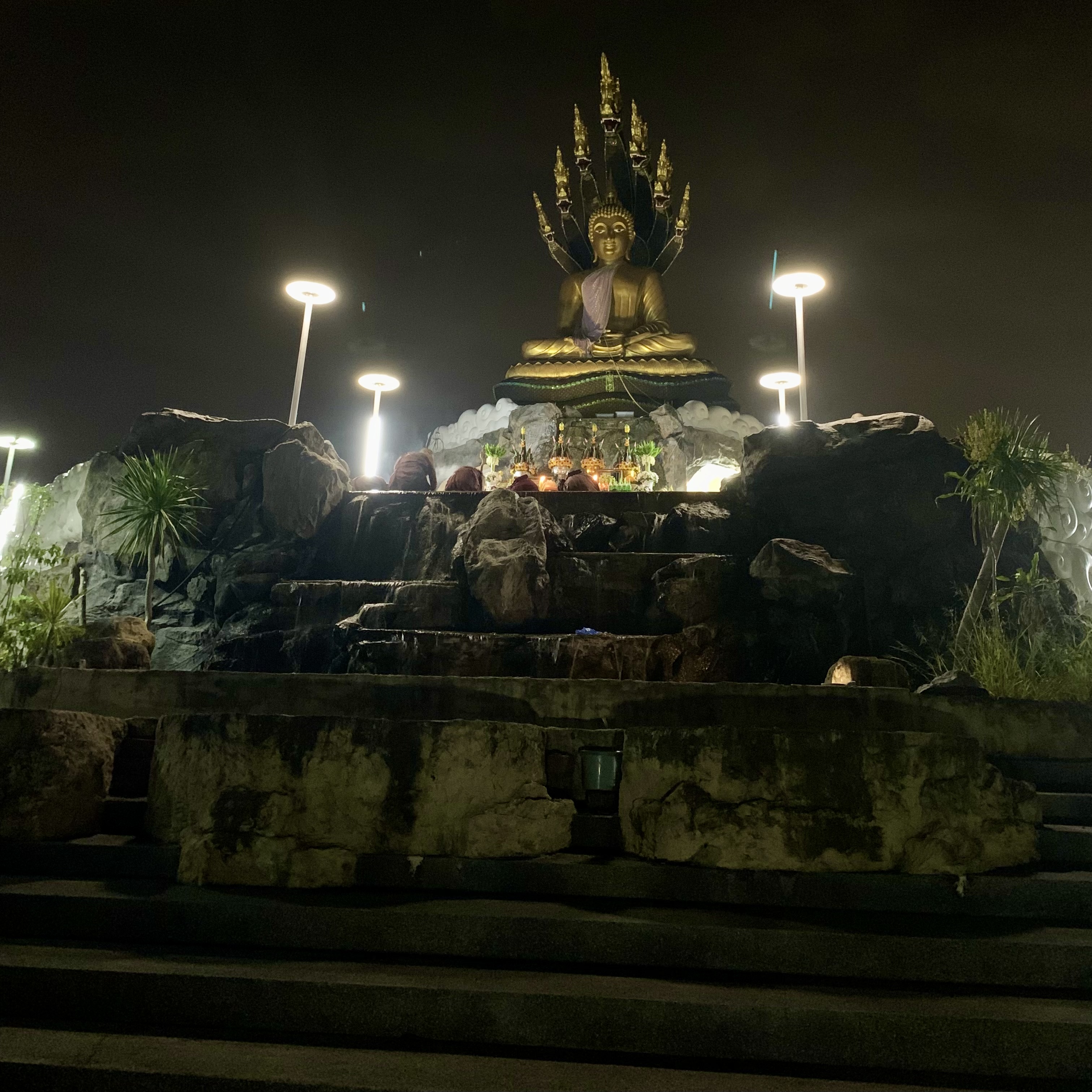
On the other side of the water, a raised platform held an altar replete with special treats and drinks to attract spirits. Several monks faced the altar, and a master held a microphone to lead the chants and offer teachings.
After awhile, everyone stood up, stacked their mats, and took a candle, a lotus flower, and three sticks of incense, which symbolized Buddha, his teachings, and the monks, according to Oon. Worshippers repeated a chant as we walked clockwise around the temple three times. Then we stuck the incense sticks in a big pot of sand, and placed the candles and flowers near the altar.
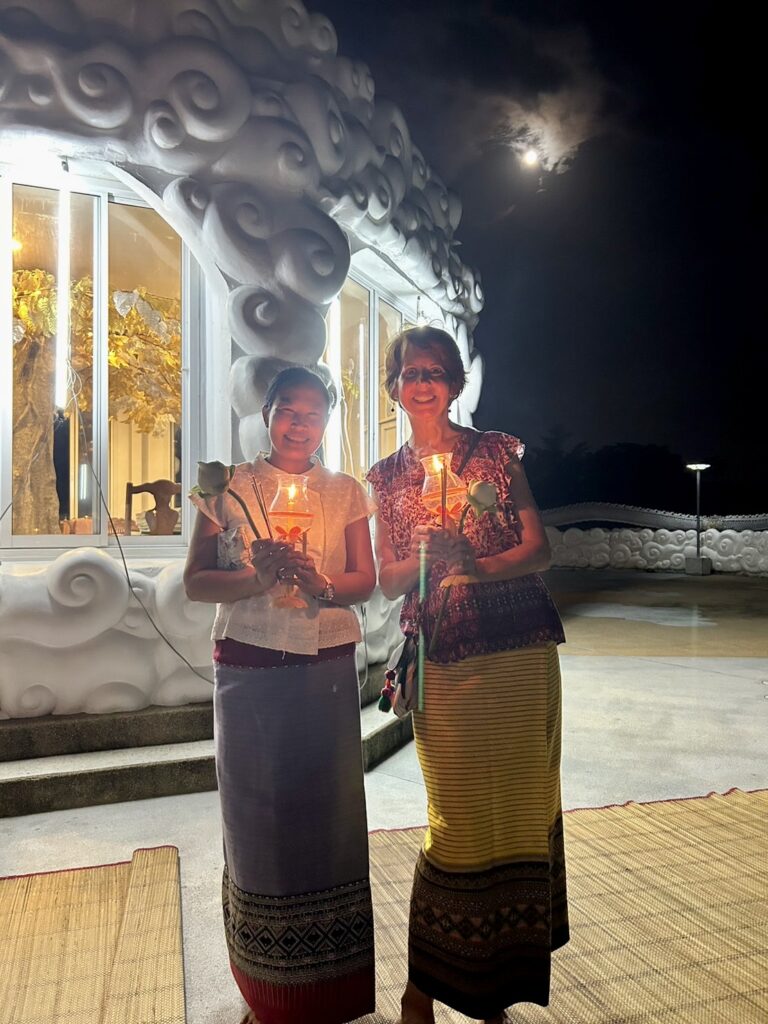
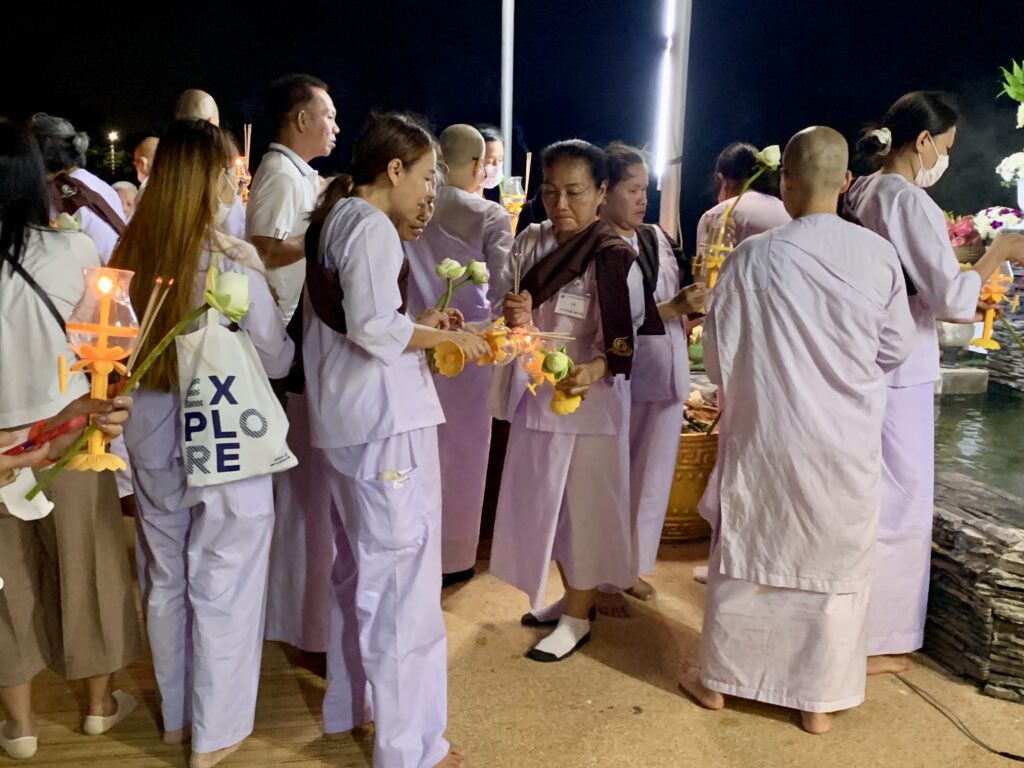
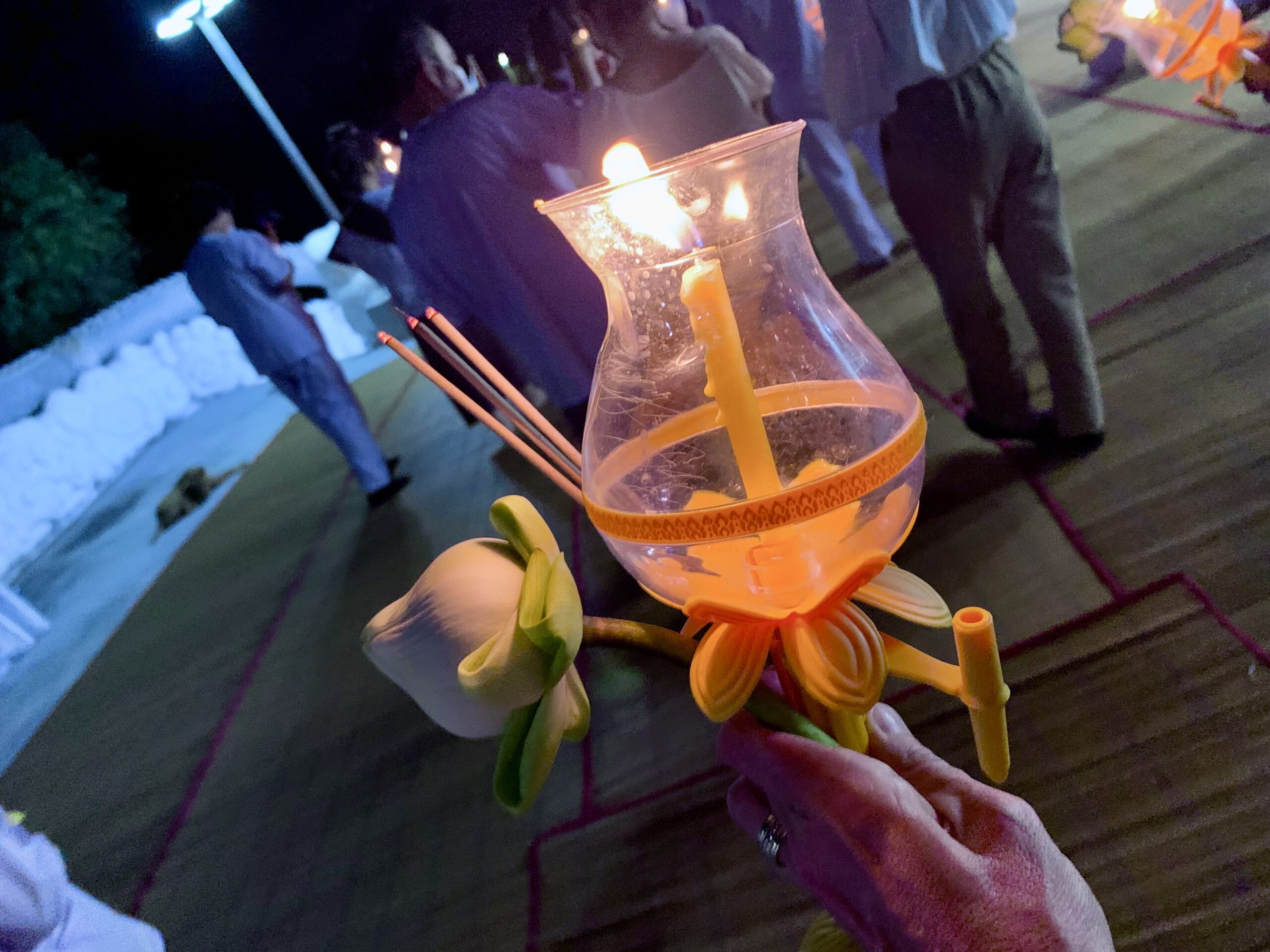
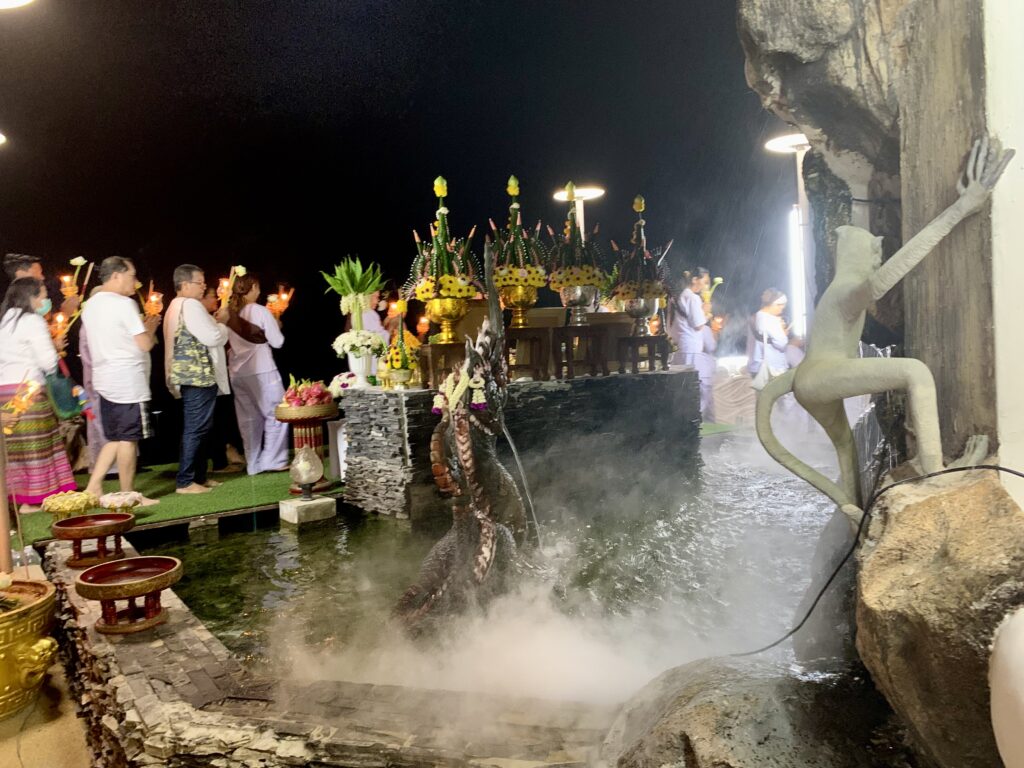
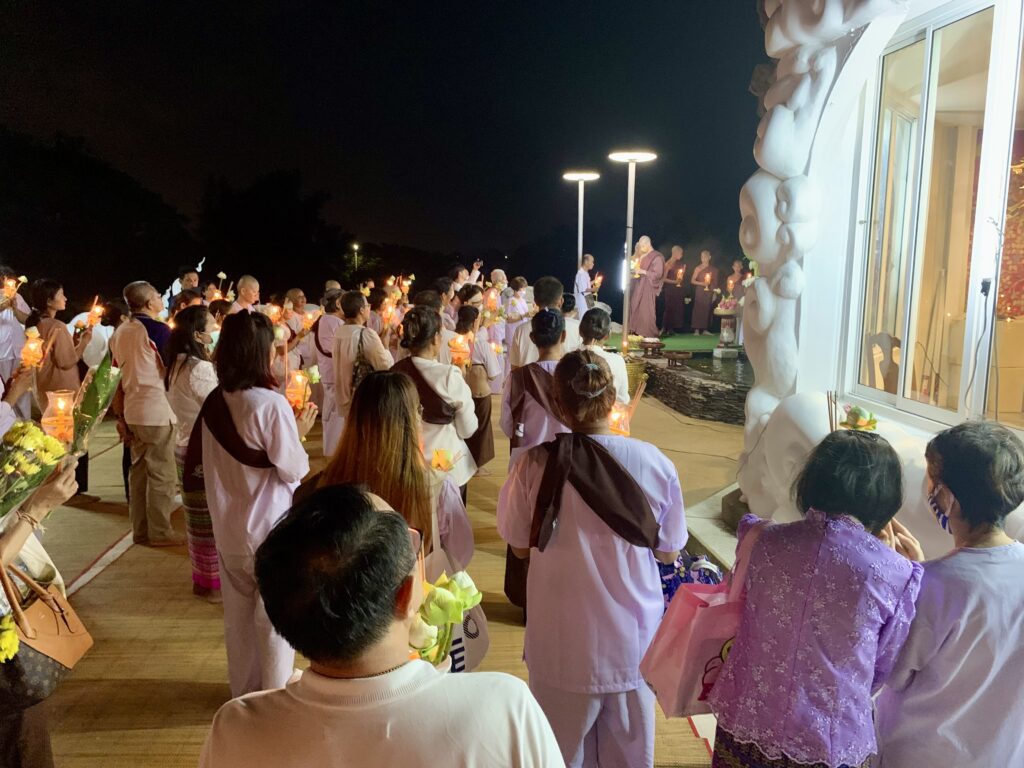
Everyone sat down again, and the master invited people to come forward to present their prayers and receive blessings. Oon gripped a white envelope, and told me to hold the other side. “Make a wish,” she said. “Think about the people you love.” Then she grabbed my hand and we shuffled forward on our knees across some turf and up a couple stairs. Of course, I didn’t understand what was being said, but it was clear the monk was receiving our wishes. I imitated Oon’s gestures to show respect, and then we shuffled backward down to our spots.
Soon the master stood up with a bundle of sticks and a helper carrying a bucket. “It’s holy water,” Oon said excitedly. The master dipped the sticks in the water and shook them over the kneeling worshippers. A few stray drops landed on my shoulder. “Oh, that’s lovely,” I thought to myself. Then the master approached, dipped the sticks in the bucket, let all the water pour down on my head, and then pounded me on the head and upper back with the sticks. “He must have thought I needed a LOT of holy water,” I whispered to Oon.
After watching him douse a few other worshippers, we stood up to leave.
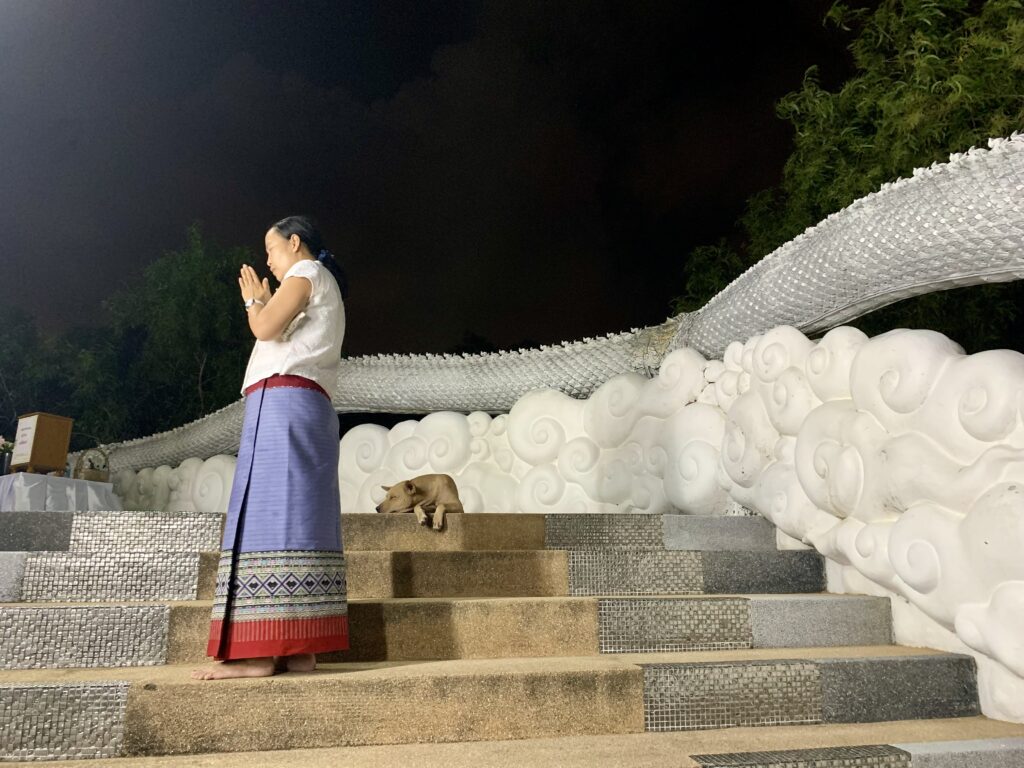
On the way home, Oon joyfully shared her feelings and beliefs about Buddhism. She sticks to the commandments: Don’t lie. Don’t steal. Don’t commit adultery. Don’t kill or harm living beings. Don’t drink alcohol. I told her I might struggle with that last one a bit, and she reassured me that you’re allowed to enjoy your beer or wine; just avoid intoxication. Sounds like a good plan.
Evenings like this are why I love living abroad. I could always pop over to a temple on my own, but experiencing the ceremony with Oon and sharing in her passion was profoundly moving and great fun.


